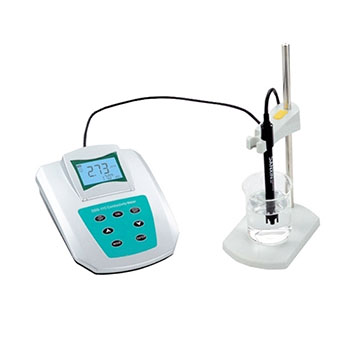How to Use Conductivity Meter?
Fri, Mar 26 by ATO.com
Conductivity meter is an instrument and equipment suitable for precise measurement of various liquid media, mainly used to accurately measure the conductivity of liquid media. When equipped with electrodes with corresponding constants, the conductivity of high-purity water can be accurately measured. At present, it is widely used in scientific research and production in various fields. This article aims to tell you how to use the conductivity meter.
- Pay attention to the following before using the conductivity meter:
- Adjust the knob according to the electrode constant, while adjusting the knob to the measuring gear during the measurement.
- Adjust the conductivity meter to the calibration gear with the pointer pointing to the maximum scale.
- Check whether the pointer is pointing to zero. If not, adjust the zero setting knob on the conductivity meter.
- Guidelines for using conductivity meter:
- Turn on.
Check each plug connector to make sure the plug is inserted correctly. Turn on the host switch of the conductivity meter and the instrument enters the measuring state. Check if the gauge pin points to zero before power is switched on. If not, adjust the head adjustment screw to make the gauge pin point to zero. Adjust the conductivity meter to the correction file with the pointer pointing at the maximum scale. - Display.
Display has two modes. One is standard view, which displays all information on the display. The other is super view (measurement close-up view), which displays measurement information in large fonts. During the measurement, before or after the measurement, keep pressing the READ key for 2 seconds to switch between these two modes. - Button control.
(1) Button: Generally press and release, or hold for 2 seconds.
(2) On/Off: Responsible for turning on or off the instrument.
(3) READ start or end measurement: (confirm input during measurement or start editing the table, exit the setting, and return to the measurement screen) Switch between super view and standard view during measurement. Use the calibration key CAL to start calibration and view the latest calibration data.
- Calibration.
Calibration can only be performed in the standard view. If you press the CAL (calibration) key to start the calibration when the meter displays the super view, it will automatically switch to the standard view. The following operation takes the electrical conductivity meter for water with a specification of 200mS/cm, DC 9V as an example.
(1) Place the electrode in the standard solution and press the CAL (calibration) key. Then CAL appears on the screen.
(2) After the signal has stabilized or when the READ key is pressed, the instrument is terminated according to the pre-selected endpoint mode. The calibration result is shown on the display.
(3) Press the save key to save the result.
(4) Press the exit key to reject the calibration data, and the instrument automatically returns to the measurement screen. - Sample measurement.
Put the electrode in the sample and press the READ key to start the measurement. The display shows the sample reading, while the endpoint mode icon A flashes, indicating that the measurement is in progress. Once the measurement is stable, the stability icon A will be displayed.
The end point mode can be set in the menu setting:
(1) If you choose the "auto terminal point" format, the measurement will stop automatically after the stable icon appears.
(2) If you choose the "manual terminal point" format, press the read key to stop the measurement manually.
(3) If you choose the "timed terminal point" format, the measurement will stop after a predetermined time has been reached. - Data storage.
The instrument can store up to 1000 data in the memory. The number of the data already stored in memory is indicated on the screen in the format “Mxxxx”. A message appears on the screen when the memory is full. If data is to be stored after the memory is full, it must first be deleted. - Cleaning and maintenance.
(1) To ensure the most accurate conductivity readings, standard solutions should be used to verify the cell constants regularly. If necessary, calibrate again.
(2) It is forbidden to separate the casing of the meter.
(3) Except occasionally wiping with a damp cloth, the instrument does not require any maintenance.
- Cautions when using the conductivity meter:
- The lead of the electrode should not be wet, otherwise the measurement will be inaccurate.
- The container containing the tested solution must be clean and free of ion contamination.
- The high-purity water should be measured quickly after being filled into the container, otherwise the conductivity will increase quickly because the CO2 in the air dissolves into the water and becomes carbonate ions.

